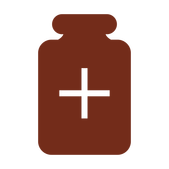Lepidodactylus lugubris - Mourning Gecko
Mourning Geckos - Lepidodactylus lugubris - are a very small, fast moving, active gecko found in many parts of the world. They are a tropical, arboreal gecko and are cathemeral, meaning they are irregularly active both day and night. They are parthenogenetic, which is a type of asexual reproduction; they don't need males to reproduce. All mourning geckos are female, and basically clone themselves. If you keep this species, be prepared for babies! Due to their range, there are different locales with different patterns and colorations.
|
Bringing Your New Pet Home
When you bring your new gecko home, you should already have a quarantine tank set up and ready to go. Place fresh water in a bowl in the tank, mist the tank and offer food, but be aware it is completely normal for them to refuse food for the first couple days, or even longer. You should keep this new gecko separate from any other geckos you may have for 90 days, to ensure there is nothing it could spread to your other animals. Monitor its eating and fecals as they may be strange for up to a couple weeks, but this is due to a new diet, supplements, and environment. It is recommended you do not handle your new gecko for the first 24-48 hours and keeping it to a minimum until it has started eating on its own. Always keep in mind, your new animal is in a new tank, with new decor/dishes/hides, and new faces watching them. They need time to become acclimated to it all. After this quarantine process, they can be safely introduced to their permanent enclosure if it's not already. Be sure to wash your hands before handling any other geckos during this time. |
|
Compatibility
Geckos by nature are solitary animals, but mourning geckos seem to do very well in groups. They must be of the same size to prevent bullying, and bigger mourning geckos will very often eat smaller ones, so keep them of the same size. They develop a social hierarchy, so you may observe fighting, although they rarely injure each other severely. Adding more hides and decor will help prevent fighting. They often communicate with various chirps and forms of body language, and are a very fun gecko to observe. |
|
Lighting
Mourning geckos are cathemeral, meaning they are active at both day and night. They should be exposed to 10-12 hours of light per day. These geckos benefit from the addition of tropical UVB or UVA light for added health benefits. All lights should be placed on a timer so the gecko has darkness at night.
|
|
Cage Decor
Since they are very active and arboreal, they need to have places to hide and lay eggs. You will most often find mourning geckos hanging out in branches or foliage, so decorate the tank heavily with fake greenery, branches, with the addition of cork bark and cork rounds. |
|
Humidity and Shedding
Mourning geckos are a tropical species, so they require higher humidity level of around 60-70% with wetter periods up to 90%. You can best achieve this by misting the enclosure twice a day, once in the morning and once at night. While it is good to offer a shallow bowl of fresh water, most geckos will not drink from bowls and instead prefer to lick water droplets off the enclosure walls and plants. Misting will not only keep the humidity levels up, but offer them hydration as well. You do not want the cage soaking wet, and should allow it to dry out some between mistings. Mourning geckos will shed their skin as they grow and regularly as adults. You’ll notice their color will appear dull when they are about to shed. Generally, the gecko will eat all of their shed, but you may see some of the shed skin in the cage. Stuck shed is often an indication of humidity issues, so you can help this by misting more often or heavier.
|
|
Water
Your mourning gecko should have access to fresh, clean water in a shallow bowl at all times. Some will not drink directly from bowls and prefer to lick water from misting off leaves, but many have been seen drinking from bowls. Water can be treated with a commercial water treatment to remove any harsh chemicals from the water. |
|
Feeding Mourning geckos are insectivores and frugivores. Typically, their diet consists of small insects like fruit flies, small crickets or small dubia roaches and a commercial based, balanced fruit powder you prepare much like a smoothie. These diets are called meal replacement powders or MRPs. Do not feed mealworms or superworms, as they do not digest them well. Crickets can be placed in the enclosure during feeding time, but uneaten crickets should always be removed. MRPs can be mixed in small bowls and placed in enclosure. Insects should be gutloaded with a commercial gutload product. Gutloading refers to the practice of feeding the insects a nutritious diet before offering them to your gecko, to ensure the most balanced nutrition. Geckos that are under 4-6 months old should have MRPs available at all times and it should be changed out every other day with fresh food. Adults can go a few days between feedings and should be offered fresh food 2+ times per week. Keep on eye on food to be sure it is not molding, and remove or replace if it is. Insects can be offered 2-3 times a week. Be sure the insect is appropriately sized for your gecko. It should be no larger than the space between their eyes. Pinhead or 1/4" - 1/2" crickets are best for Mourning geckos depending on size, as well as flightless fruit flies or dubia nymphs. 
There are many MRPs on the market in a variety of flavors. Some of the most commonly found are Pangea Complete Gecko Diet and Repashy Gecko Diet. |































